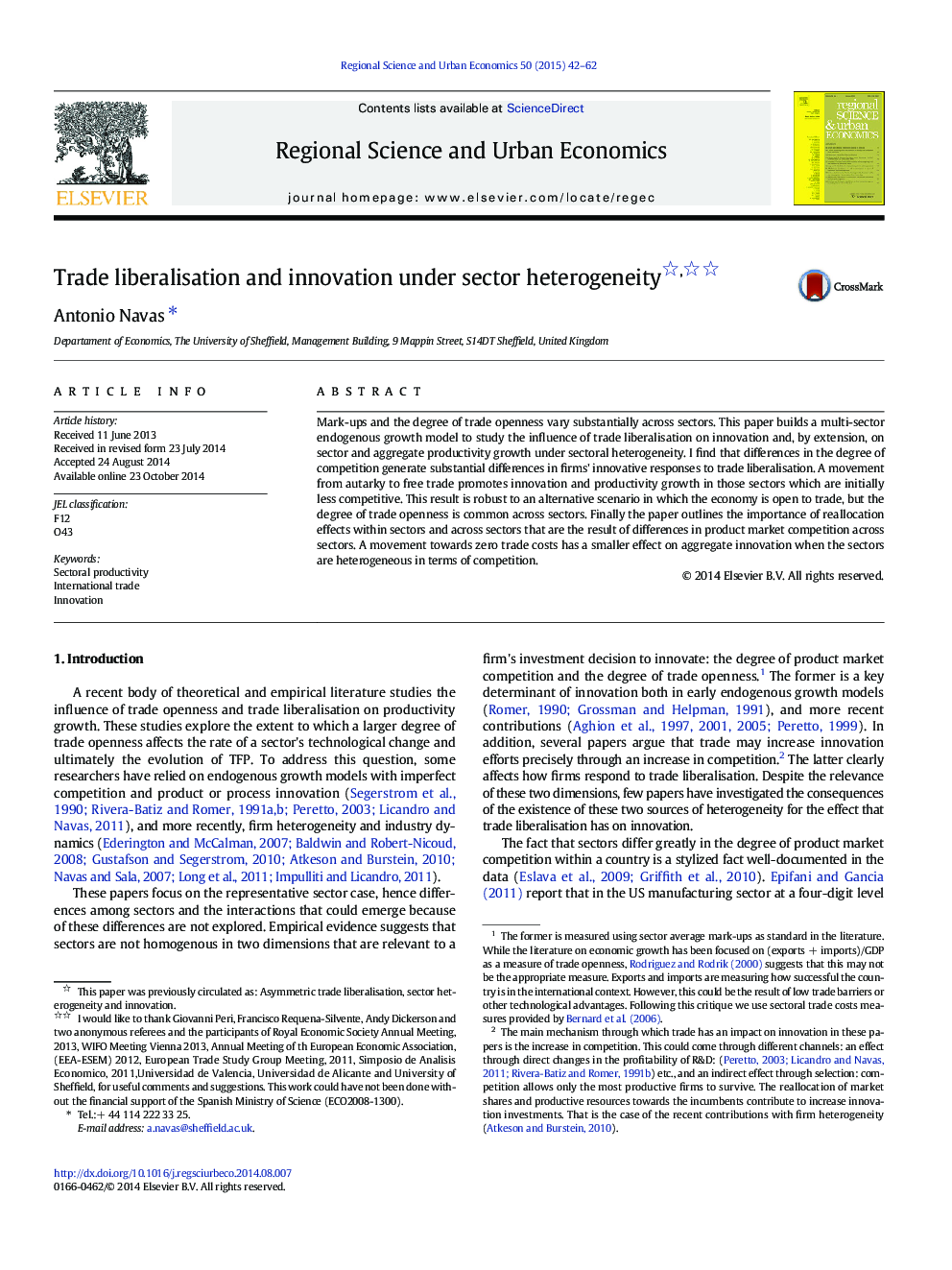| Article ID | Journal | Published Year | Pages | File Type |
|---|---|---|---|---|
| 983697 | Regional Science and Urban Economics | 2015 | 21 Pages |
•A multi-sector oligopolistic endogenous growth model•Trade liberalisation policies affect innovation.•The effect depends on the initial degree of competition and trade openness.•Large reallocation effects both between industries and within industries
Mark-ups and the degree of trade openness vary substantially across sectors. This paper builds a multi-sector endogenous growth model to study the influence of trade liberalisation on innovation and, by extension, on sector and aggregate productivity growth under sectoral heterogeneity. I find that differences in the degree of competition generate substantial differences in firms' innovative responses to trade liberalisation. A movement from autarky to free trade promotes innovation and productivity growth in those sectors which are initially less competitive. This result is robust to an alternative scenario in which the economy is open to trade, but the degree of trade openness is common across sectors. Finally the paper outlines the importance of reallocation effects within sectors and across sectors that are the result of differences in product market competition across sectors. A movement towards zero trade costs has a smaller effect on aggregate innovation when the sectors are heterogeneous in terms of competition.
